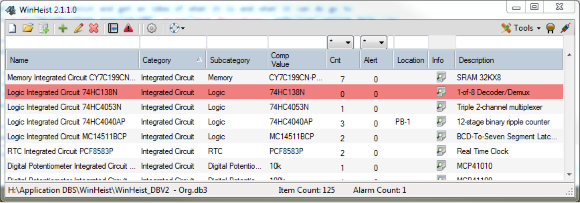

Mike @ jaxcoder.com has published a Beta version of his Electronics Parts Inventory System for Windows OS. Update 14/08/2024: you can reach the file here
The Windows Hobbyist Electronic Inventory System or WinHesit is an electronics component organizer on steroids that was developed with the electronic hobbyist in mind. Designed to be light weight, responsive and most of all easy to use it also allows a lot of information to be optionally entered for those that need to store more data that is to be associated with the component.
WinHeist can be used right out of the box or customized to work the way you work. A database of common parts is provided to get you started but configuring the application to your specifications is easy and once configured the settings can be saved so that all future DBs can use the same settings.
Hobbyist Electronic Inventory SysTem – [Link]

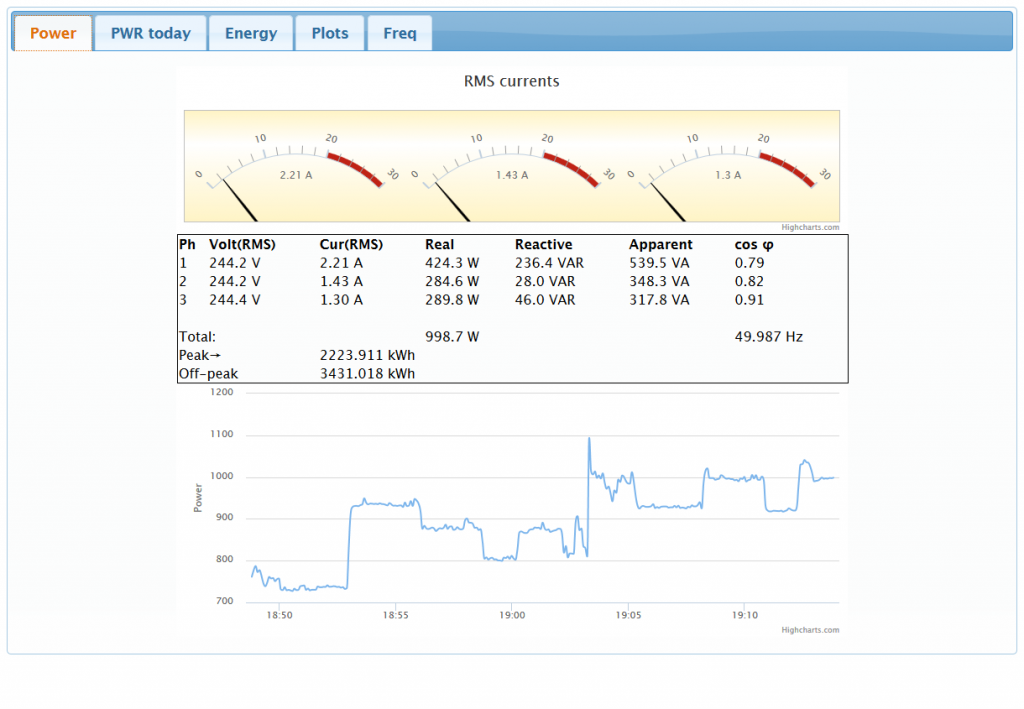
TSalwach @ github.com build a 3-phase home power meter system. A STM32F072RB MCU on Nucleo evaluation board make measurements and Raspberry Pi 1 collects data and share via web interface.
I want to have real time power measurement of my home in my smartphone. I’ve got one some long time ago, it was counting time between pulses on energy meter. It was sufficient, but when I upgraded my home to three phase AC I thought it would be nice to have some new gadget, so I’ve built one.
Home energy monitoring using Nucleo and Raspberry Pi – [Link]
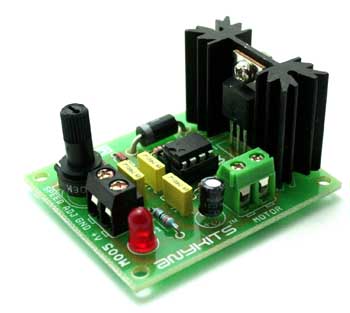
555 DC Motor Speed Controller project will control the speed of a DC motor connected to it. This project is built using the popular 555 timer IC.
Specifications
- Power supply input 5-12V DC
- Motor Load Up to 1 to 2Amps
- Onboard preset to vary Duty Cycle from 10% to 95% @ 120 Hz
- Ideal for mini drill and robotics application
- Transistor based output drive with heat-sink
- Diode protection for motor surge
- Power-On LED indicator
- Screw terminal connector for easy power supply input and output-Motor connection
- Four mounting holes of 3.2 mm each
- PCB dimensions 47 mm x 56 mm
555 Based DC Motor Speed Controller – [Link]


555 DC Motor Speed Controller project will control the speed of a DC motor connected to it. This project is built using the popular 555 timer IC.
Specifications
- Power supply input 5-12V DC
- Motor Load Up to 1 to 2Amps
- Onboard preset to vary Duty Cycle from 10% to 95% @ 120 Hz
- Ideal for mini drill and robotics application
- Transistor based output drive with heat-sink
- Diode protection for motor surge
- Power-On LED indicator
- Screw terminal connector for easy power supply input and output-Motor connection
- Four mounting holes of 3.2 mm each
- PCB dimensions 47 mm x 56 mm
Schematic
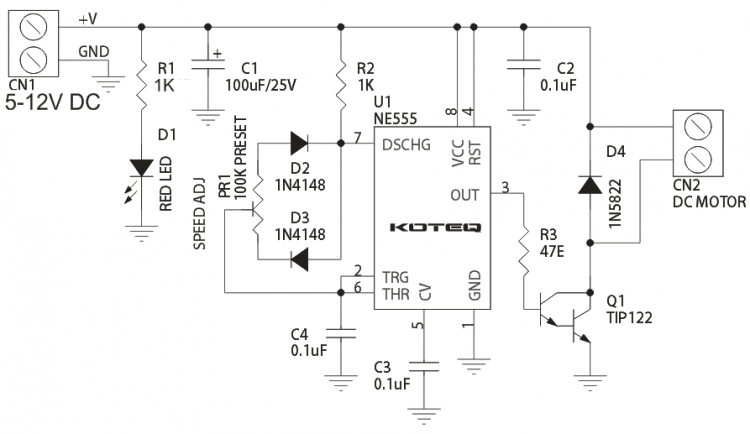
Parts List
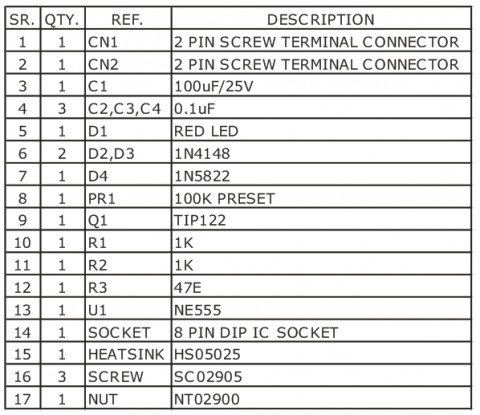

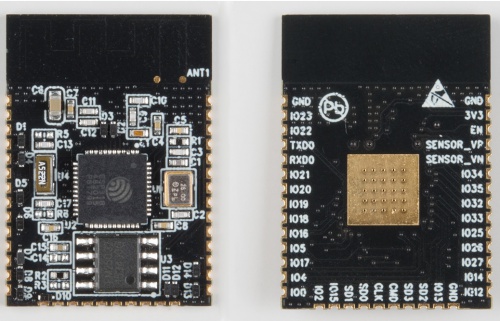
Jimb0 @ sparkfun.com takes a first look on the new ESP32 WiFi board by Espressif that’s an improvement of the ESP8266 board.
The ESP32 doesn’t replace the ESP8266, but it does improve on it in every aspect. Not only does it have WiFi support, but it also features a Bluetooth 4.2 radio, making it even more versatile. The CPU is similar to the ESP8266 – it’s a 32-bit Xtensa® LX6, but the ESP32 has two cores! There’s also 128KB of ROM and 416KB SRAM, but Flash memory (for program and data storage) is still left up to an external chip (up to 64MB).
Sparkfun: First Impressions of the ESP32 – [Link]

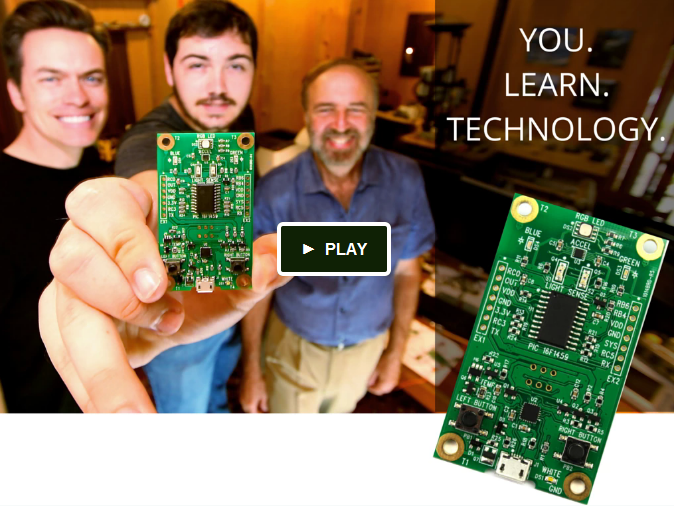 A new board that aims to fill an education gap for programmable boards is on kickstarter. SCIO enables anyone, without the need of previous experience, to experiment with electronics and coding and build various projects based on onboard sensors, work on the cloud, make light shows and even more.
A new board that aims to fill an education gap for programmable boards is on kickstarter. SCIO enables anyone, without the need of previous experience, to experiment with electronics and coding and build various projects based on onboard sensors, work on the cloud, make light shows and even more.
Within an hour of opening the box, someone who previously knew nothing about computers, programming and “boards,” can write programs that explore, educate, and entertain.
When someone buys a Raspberry Pi or Arduino without any prior programming experience, this person often reports being lost because they do not have the technical skills to use it. The information available for programming and using these devices is often difficult to understand for beginners.
SCIO: The Fun New Way To Learn Coding, Computers and STEM – [Link]

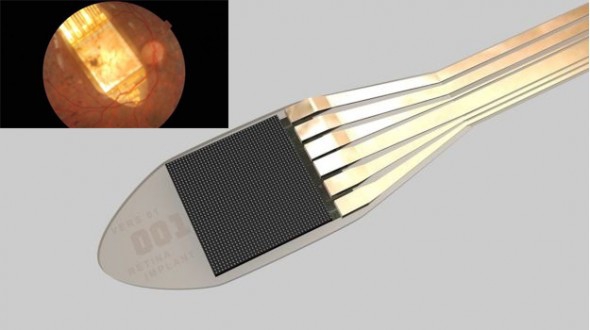
A team of scientists at Oxford Eye Hospital aim to create a bionic eye, that will make people who lost their sight to see again. A special chip is placed behind the retina and a small processor sends signal to the optic nerve and brain process it thus enabling the person in treatment to see.
In Lewis’ case, after just two days of tests, she was able to make out basic shapes and see outside for the first time in over a decade.
It helped that in her case, Lewis’ optic nerve was still intact. But it still took some time for her brain to adjust to actually seeing for the first time in years. The first test was to see blinking lights on a computer screen, which she passed with ease. But when it came to discerning a white plate on a black table cloth, not so much. Trying to not feel overly defeated, Lewis came back the next day and was able to make out the shape, and more.
A new form of retina implant returns sight to the blind – [Link]

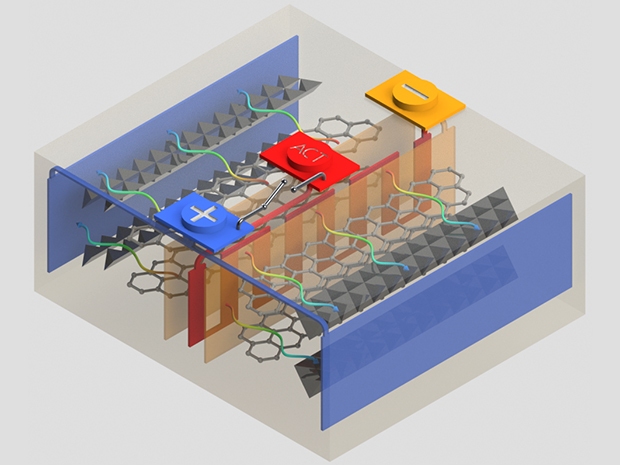
Charles Q. Choi @ spectrum.ieee.org discuss about a new type of li-ion battery able to work in low temperatures.
A new “all-climate” lithium-ion battery can rapidly heat itself to overcome freezing temperatures with little sacrifice in energy storage capacity and power, researchers say.
This advance might enable applications for which high-performance batteries are needed in extremely cold temperatures, such as electric cars in cold climates, high-altitude drones, and space exploration. EC Power is now creating all-climate battery cells in pilot-production volumes that can be put directly in vehicles, says study lead author Chao-Yang Wang, a mechanical and electrochemical engineer at Pennsylvania State University.
Lithium-Ion Battery Warms Up, Operates In Subzero Temperatures – [Link]

The circuit is a simple digital frequency meter that is made of a frequency-to-voltage converter and an analog-to-digital display converter that can be operatedfrom a single 9-volt battery. The TC7126 ADC generates the voltage required by the TC9400 FVC with internal regulators. The TC7126 is designed to directly drive a 3-1/2 digit, non-multiplexed LCD display so no digital conversion is required.
The input circuit is made up of a current limiting resistor (33kΩ), a DC blocking capacitor (0.01µF), a clamping diode (1N914), and a biasing resistor (1MΩ). The diode acts as a soft clamp to prevent negative going transitions from latching the comparator input and the 33kΩ resistor limits the current during the positive transitions. The gain (VOUT vs. FREQIN) of the TC9400 is determined by the charge-balance capacitor and the integrator feedback resistor (620kΩ) that has been selected for an output of approximately +2V (referenced to ANALOG COMMON) with frequency input of 20kHz. The bias resistor (12kΩ) determined the input threshold of the comparator and has been selected for an input sensitivity range of 250mV to 10V peak-to-peak of a sine or square wave on the input of the FVC.
The TC7126 will have a maximum positive input of about 2V since the input is referenced to ANALOG COMMON that is only 3V below V+. The internal voltage swing of the integrator does not have the same limitation because a positive input results in a negative swing of the integration. A fully charged battery will give a range of about 6V. The integration components (1MΩ and 0.047µF) at pins VBUFF and VIN are selected, in conjunction with the oscillator frequency to have an integrator ramp amplitude of about –3V with a 2V input from the TC9400. The oscillator is set up to run at 48kHz (150kΩ and 50pF) for maximum rejection of stray power-line pickup. This will result in the TC7126 running at three conversions per second.
Battery Powered Frequency Meter (0 to 20kHz) – [Link]

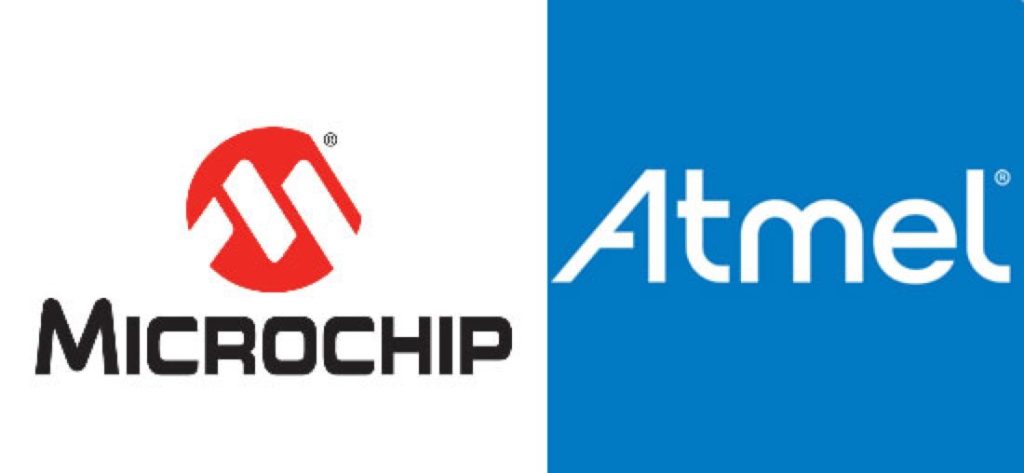 Microchip Technology to Buy Atmel for Nearly $3.6 Billion @ The New York Times.
Microchip Technology to Buy Atmel for Nearly $3.6 Billion @ The New York Times.
Microchip Technology agreed to acquire a fellow chipmaker, the Atmel Corporation, for about $3.6 billion, part of a wave of mergers and acquisitions within the semiconductor industry.
Chip makers have been combining to cut costs and build scale for their customers. Microchip agreed to acquire the 37-year-old chipmaker Micrel in May for about $839 million. Microchip purchased Supertex for $394 million in 2014, and the year before that, bought the closely held Brussels-based EqcoLogic for an undisclosed amount.
Microchip joins larger peers in this round of consolidation, including Avago Technologies, which agreed to acquire Broadcom for $37 billion, one of the biggest deals ever within the semiconductor industry.
Microchip to Buy Atmel for Nearly $3.6 Billion – [Link]



















